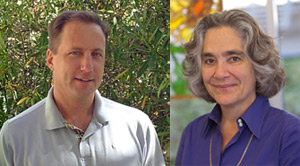
Handy Links
SLAC News Center
SLAC Today
- Subscribe
- Archives: Feb 2006-May 20, 2011
- Archives: May 23, 2011 and later
- Submit Feedback or Story Ideas
- About SLAC Today
SLAC News
Lab News
- Interactions
- Lightsources.org
- ILC NewsLine
- Int'l Science Grid This Week
- Fermilab Today
- Berkeley Lab News
- @brookhaven TODAY
- DOE Pulse
- CERN Courier
- DESY inForm
- US / LHC
SLAC Links
- Emergency
- Safety
- Policy Repository
- Site Entry Form

- Site Maps
- M & O Review
- Computing Status & Calendar
- SLAC Colloquium
- SLACspeak
- SLACspace
- SLAC Logo
- Café Menu
- Flea Market
- Web E-mail
- Marguerite Shuttle
- Discount Commuter Passes
-
Award Reporting Form
- SPIRES
- SciDoc
- Activity Groups
- Library
Stanford
Around the Bay
From the Director: Incident Reporting and Lessons Learned

In a previous column, our Partnering Commitment was shared with the Laboratory and Federal Staff. This Commitment set expectations on how the Department of Energy, SLAC, and Stanford University would work together and meet our stakeholder’s expectations. A very important provision of that Commitment was our responsibility to our employees:
Our employees must have a safe work environment and feel empowered to commit to an accident and injury free work place. All employees must feel free to make suggestions or raise concerns freely, without fear of retribution or attribution.
In short, we want to do everything we can to ensure you go home tonight as safe and healthy as you came in this morning. To do that, we all need to work together to create an accident free work environment.
Working in partnership, the laboratory, university and Department of Energy (DOE) hosted visitors last week from DOE’s Office of Health, Safety and Security as well as from the Office of Science to focus on how we could learn from our accidents and incidents, in order to avoid bigger, potentially more serious, mishaps in the future and live up to this commitment.
In reviewing recent event reporting, both of us had concerns that we sometimes react to events with an attitude of “I know why this happened and will fix it… the paperwork and bother of the reporting process is not adding value and is just something I have to do because the DOE or SLAC Management are making me do it.” When we have an incident, an injury or an operational failure, we have a collective responsibility to understand what went wrong—even if the consequences were minor—to learn from what happened. While this is not always easy or comfortable, clear and accurate reporting is the only way we can learn to avoid mistakes in the future. Unless we understand what caused the event, and actions are taken to prevent it from happening again, we risk making the same mistakes over and over. Additionally, we have a responsibility to others in the DOE laboratory complex to share our lessons learned through the Occurrence Reporting System process so others can learn from our experiences as well.
The Site Office and the Laboratory will work together in close partnership to have the most effective processes that we can. To reinforce our culture of line management responsibility for safety, line management will take the responsibility for the incident investigations with the Environment, Safety and Health (ES&H) Division, participating and providing technical support. It was an excellent beginning that for the assist visit last week, everyone came together acknowledging the reality of the situation, we worked together to find solutions to our challenges, and we will be working as a team to make it happen. Over the next several weeks you’ll see further information about improvements to our incident notification and investigation processes.
Lastly, if you see something that is not right, or if something goes wrong, even if it is minor, we ask that you please report it. Don’t be afraid to over-communicate; we would both prefer that you over-communicate rather than under-communicate. This applies to staff communicating with lab management and it applies to SLAC management communicating with the Site Office and Stanford. Remember that a near miss, a first aid case or a minor injury are signs that something is wrong. We don't want to overlook the warnings and have a severe accident. If safety is truly to be a core value of this institution, along with outstanding science, we must have very high standards for achieving safety and science. Even more challenging, we must be willing to admit when our behaviors don't meet our own expectations, work to understand why the behaviors are occurring, and do what it takes to correct it.
Together we can do this!